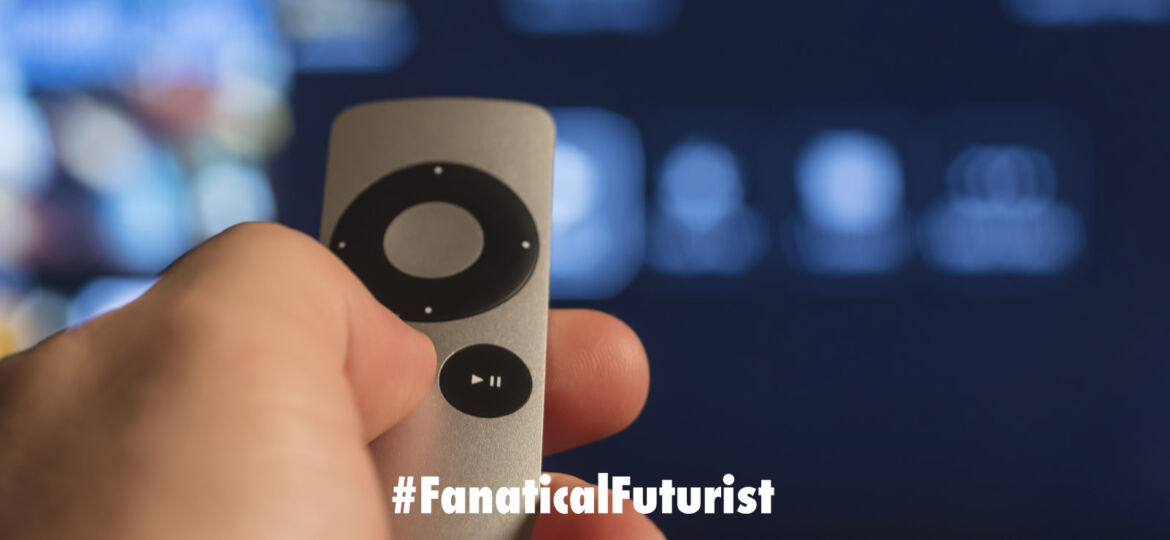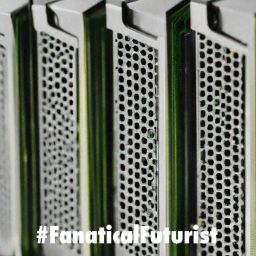
WHY THIS MATTERS IN BRIEF
With over half the world’s population in some form of lockdown everyone’s smashing the networks so companies are using AI to keeping those networks fast and reliable.
 Interested in the Exponential Future? Connect, download a free E-Book, watch a keynote, or browse my blog.
Interested in the Exponential Future? Connect, download a free E-Book, watch a keynote, or browse my blog.
As the Coronavirus pandemic, Covid-19, continues to rage around the world exponential technologies are making their presence felt and helping out, whether it’s using 3D printers to help fix ventilators and turn snorkels into respirators, AI’s and supercomputers to try to identify vaccines and use people’s voices to test for signs of infection, using drones to disinfect streets and scan people breaking curfews for signs they’re infected, autonomous vehicles to disinfect streets and subways, and deliver food to the needy, robots to treat hospitalised patients, or smartphones to monitor and track people when they’re out and about or in lockdown.
One older technology though that’s badly in need of an upgrade though, especially during lockdown, is broadband, and now it too is getting the futuristic treatment after companies around the world started calling on Artificial Intelligence (AI) to start helping out with network management.
Earlier this month, under the strain millions of people self-quarantined by Covid-19 Apple, Disney, Facebook, Microsoft, Netflix, Sony, and YouTube all agreed to temporarily reduce download speeds and video streaming quality in countries around the world, and during lockdown nearly half of the US’s largest cities have seen internet speeds decline, according to BroadbandNow. Akamai also found that global traffic in March and April was running 67 percent higher than the typical daily average.
As a result of government and employer mandates to “shelter in place” and work remotely from home, internet subscribers are consuming more bandwidth than during the holidays and sporting events like the Super Bowl. At the same time, ISPs are under regulatory and consumer pressure to maintain a baseline quality of service. According to new research from Park Associates, 76 percent of households say it would be difficult to go without broadband. And in March, FCC chair Ajit Pai introduced the Keep Americans Connected Pledge, a telecom industry measure that asks companies to prioritize connectivity for essential services.
Internet service providers have taken steps to ensure that internet demand doesn’t overwhelm capacity. Beyond capital improvements, some companies, including AT&T, Verizon, and Vodafone are now using Artificial Intelligence (AI) and machine learning more aggressively than ever before to balance and service networks strained by these huge surges in traffic.
In Verizon’s case they are tapping AI to respond to shifts in usage, like the 75 percent increase in gaming traffic it saw earlier this month.
“Analyzing patterns found in performance data, sensors, and alerting functions across all network platforms helps us identify performance issues before they impact the customer,” said a spokesperson. “For instance, based on analyzing patterns of performance, we are able to determine when parts of the network may need maintenance or replacement before a failure occurs and are able to roll a tech [person] to the scene or schedule that work into upcoming planned maintenance, saving on an extra trip.”
Verizon’s predictive algorithms monitor more than 4GB of data streaming every second from millions of network interfaces spanning everything from customers’ routers to sensors gathering temperature and weather data. The carrier’s analytics infrastructure also allows it to predict 698 “customer-impacting” events before they happen and take steps to prevent them from occurring. Meanwhile on home networks Verizon is automating testing on a sample of over 60,000 in-home routers every two hours, ensuring that customers receive the speed of service they pay for — even with gaming, VPN, web traffic, and video traffic increasing 75 percent, 34 percent, 20 percent, and 12 percent week-over-week, respectively.
“We’re in an unprecedented situation,” said Verizon Chief Technology Officer Kyle Malady. “We expect these peak hour percentages to fluctuate, so our engineers are continuing to closely monitor network usage patterns 24/7 and stand ready to adjust resources as changing demands arise. We continually evaluate peak data usage times and build our networks to stay ahead of that demand. While it is not clear yet how having millions of additional people working from home will impact usage patterns, we remain ready to address changes in demand, if needed.”
Over at AT&T they’re using a range of software-defined networking and network function virtualization technologies to mitigate spikes in network usage. One of these is what the company calls Enhanced Control, Orchestration, Management & Policy (ECOMP), which represents 8.5 million lines of code and supports over 100 different virtual network functions at all layers of AT&T’s network.
Like Verizon, AT&T applies predictive algorithms to its network to anticipate when hardware could potentially suffer downtime in the next days, weeks, or months. Historical analysis and pattern recognition also help optimize and route or reroute traffic. Separately, AT&T uses AI to manage its third-party cloud arrangements, such as with Microsoft and within its internal cloud and hybrid clouds. And on the mobile side, AI is aiding company technicians charged with spotting damage in cell towers from drone footage.
AT&T Labs vice president of advanced technology systems Mazin Gilbert says AT&T’s network-level AI can pick up signals indicating oncoming failures from vehicles in its repair fleet. In the future, he expects it’ll play a bigger role, potentially laying the groundwork for self-repairing systems.
“The network can’t be just software,” said Gilbert at the TM Forum Action Week conference in September 2019. “The network needs to be autonomous and pretty much zero-touch. It needs intelligence to know when it repairs itself, when it secures itself. The network needs to be contextual, personalized … [W]e have built these templates of intelligent agents. These are nothing more than closed-loop systems — closed-loop systems that capture data that can be configured for different problems. We push those in our network to collect data.”
And then at Vodafone, in the UK, they’re using a cloud-based system called Neuron to generate network insights in real time. It’s built on top of Google Cloud with centralized access to data from over 600 servers in 11 countries, and it allows management to make decisions and take automated actions to improve service. For instance, Neuron can automatically assign more capacity in busy parts of the network while reducing capacity in parts that don’t require it.
Neuron is an evolution of a trial system Vodafone deployed to its mobile network in Germany with Huawei in 2017, dubbed Centralized Self-Organized Network (C-SON). C-SON identified the optimal settings to deliver voice over LTE services across 450 mobile cell sites chosen at random in four hours, a task that would have taken an engineer 2.5 months to perform manually. That same year, Vodafone’s Ireland subsidiary and Cisco teamed up to predict locations where 3G traffic will peak in the following hour, resulting in an average 6% improvement in mobile download speed and lower inference at the cell sites. And in Spain, Vodafone Spain piloted a system from Huawei and Ericsson that automatically chose the best frequency or node for each mobile connection.
“Neuron serves as the foundation for Vodafone’s data ocean and the brains of our business as we transform ourselves into a digital tech company,” said Vodafone group head of big data delivery Simon Harris. “Not only [can] we … gain real-time analytics capabilities across Vodafone products and services, [but we can] arrive at insights faster, which can then be used to offer more personalized product offerings to customers and to raise the bar on service.”
Vodafone — which reports that some of its networks have seen a 50% traffic uptick from the beginning of March — intends to use Neuron and other diagnostic tools to increase capacity where it’s needed and absorb new usage patterns. “Vodafone will be expanding capacity to manage this demand as much as possible,” said the company in a statement. “We also want to ensure that any congestion in the network does not negatively impact mission-critical and other essential communications during this period, such as for voice and digital access to health and education, or the ability for people to work from home.”
Now, as we barrel towards the sixth month of “living with Covid-19” this year, it’s clearer than ever before that technology will play an even greater role in society than it did before and that its role out will be faster than ever before, so whether it’s autonomous drones or smart AI’s the only thing that you can be certain of in these uncertain times is that all these technologies are here to stay for good.















